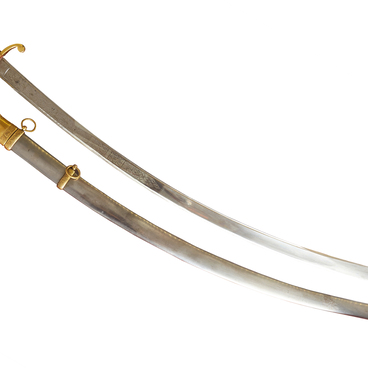In the late 17th century, the Preobrazhensky and Semyonovsky Regiments were formed on the basis of the so-called toy army of Tsarevitch Peter who later became Emperor Peter I. Gradually, the “play soldiers” turned into trained military professionals. Both regiments became the foundation for the Russian Army and the first regiments of the Imperial Guard. A few years later, they took part in real battles, including two Azov campaigns, the second of which ended with the capture of the Azov fortress.
In 1700, the regiment was named the Preobrazhensky Life Guards Regiment, that is, it acquired the status of the personal guard of the sovereign. The units took part in the Russo-Turkish War of 1735–1739, the Russo-Swedish wars of 1741–1743 and 1788–1790. In the early 19th century, they participated in the wars with Napoleonic France. During World War I, the regiment saw action in the Battle of Galicia, the Warsaw-Ivangorod operation, the First Battle of the Masurian Lakes, the Brusilov offensive and other operations of the Imperial Russian Army. After the Russian Revolution, the regiment was disbanded.
The presented jacket of the Preobrazhensky Life Guards Regiment belonged to Emperor Nicholas II. Its cut was based on an ordinary coat of the same color. But it was shorter — 3 vershoks (13.2 cm) above the knee, had a smooth back (without folds) and an additional breast pocket on the left side. The jacket did not have a half-belt on the back nor a split at the bottom. Shoulder straps, piping, lining, lower side pockets, buttons and buttonholes were the same as on the coat. The chest pocket was made without a flap. The general’s jacket had a colored lining and piping around the collar, along the sides, on the cuffs and pocket flaps, which also echoes the coat’s design. The breast pocket was not trimmed with piping.
In 1900, the emperor commissioned the artist
Valentin Alexandrovich Serov to paint his portrait as a gift for his wife,
Alexandra Feodorovna. Given the purpose of the work, the artist wanted to
create a different mood of the image, distinguishable from the official
portrait. The emperor is depicted in the jacket of the Preobrazhensky Life Guards
Regiment in a simple, ordinary pose. Using artistic means, Serov focuses one’s
attention on the eyes of Nicholas II. According to contemporaries, this
portrait of the emperor was one of the best.


